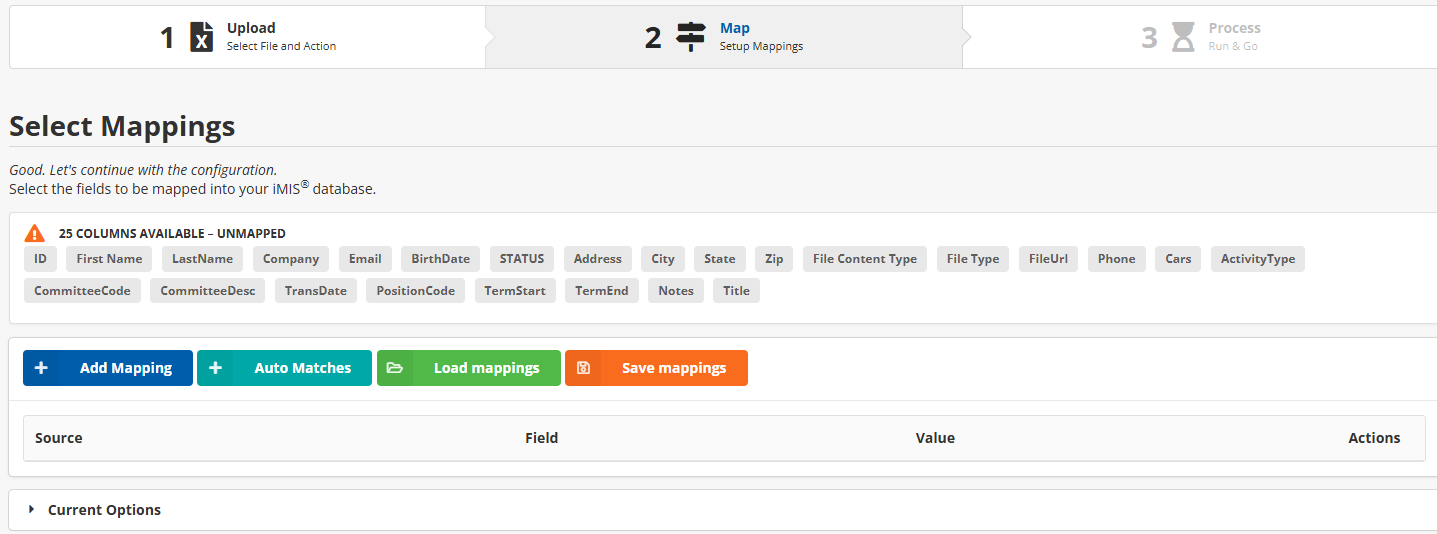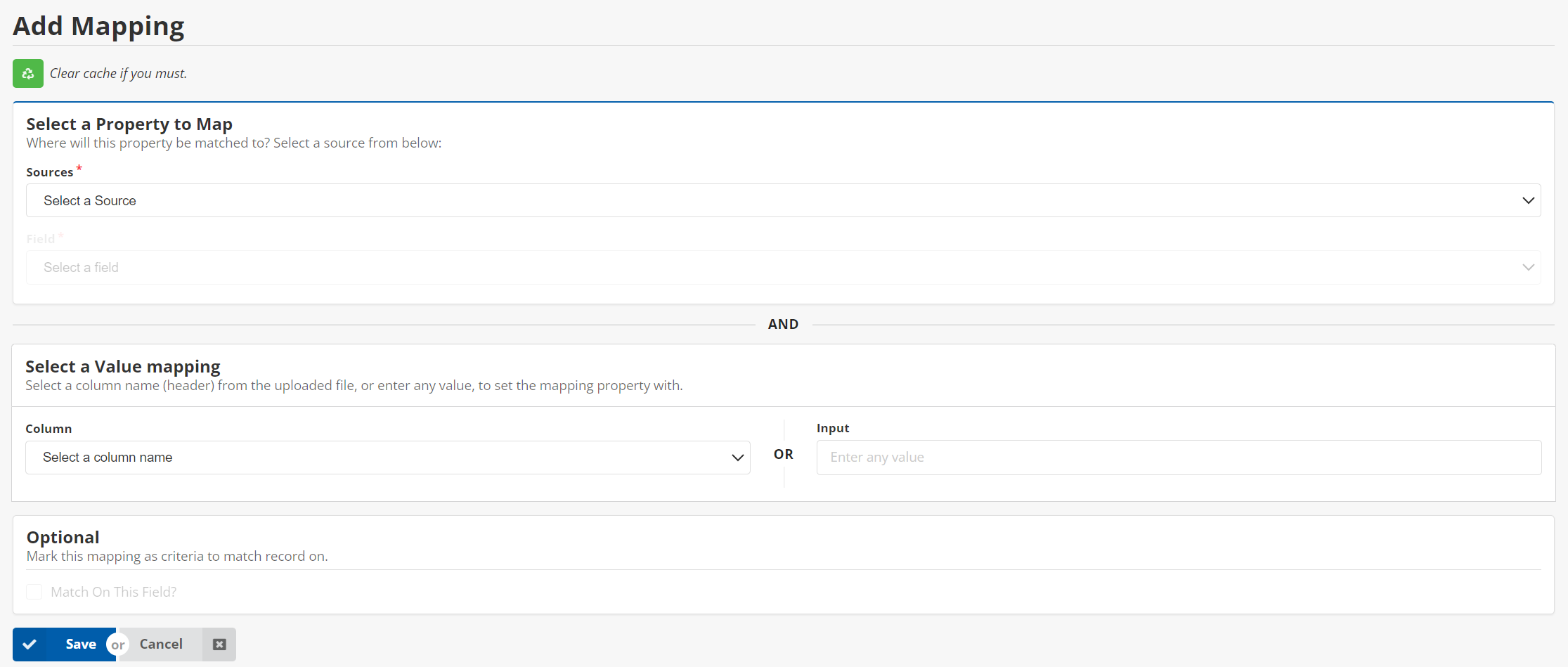Mapping
Overview
This page describes how to Map Imports and Updates. Mapping is where you decide what to do with the data in your spreadsheet (iImport) or IQA query (iUpdate). It is often used with iSchedule.
Important Notes for Mapping
Column Names. Ensure every column in the spreadsheet/query is distinct and is not repeated as this can cause issues.
Map Columns from Spreadsheet Only Once. Each column from your spreadsheet/query is recommended to only be mapped once, as this can cause issues within the product.
Mapping Columns. You do not need to map every value (one is required, more is recommended).
iMIS 2017: Business Object and Table Names. You will get an error if your business object has the same name as your table. Create another business object (or the generated
Csversion) pointing to the same table.
Navigating the Map Screen
After selecting Insert, Insert w/ Matching Help, Update, Insert / Update, or Delete, you will see the Map screen.
Overview of the Mapping Screen
This uppermost section shows what step in the process you are on. You can click the Intelligent Query Architect tab (Upload for iImport) to go back.
The fields available in your spreadsheet are listed here. You can click on a field name to map it, or click the Add Mapping button.
There are 4 colored options:
When your fields are mapped, click Submit to begin the import immediately OR click Schedule as Task to save the import as a new task to be executed on a schedule.
Selecting and Mapping a Field
After clicking a field to map or "Add Mapping", you will be brought to the Add Mapping screen.
Select the Column from your spreadsheet or IQA query you want to map to the field above OR enter a hardcoded value for the field. To hardcode true, enter 1/T/True/Y/Yes. To hardcode false, enter 0/F/False/N/No.
Match On This Field? Select this checkbox to mark this mapping as criteria to match on.
Append to Existing Value in Field. If the panel field is multi-select, a panel for appending values will appear at the bottom of the screen. To hardcode multi-select fields, the fields should be separated by only a comma (e.g. field1,field2,field3).
Blank Out Field in iMIS. To learn more about how this setting works, please see Task Options.
Other Settings. Learn more about other Task Options.
Using Templates
Templates can be used to save time on repeated tasks. Learn more on using templates.



